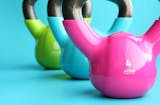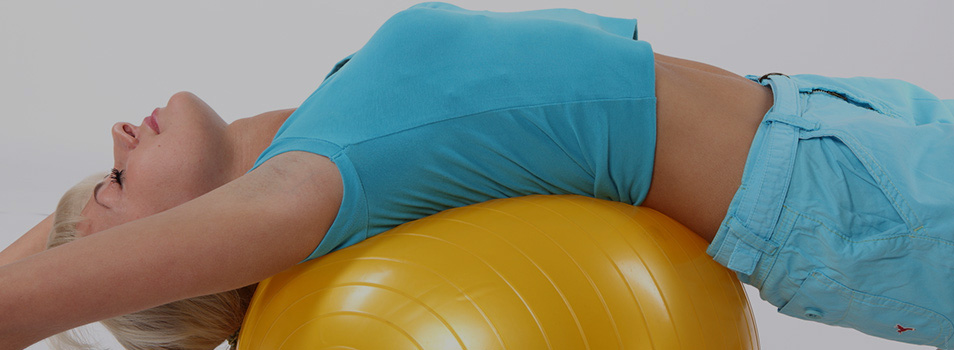1.1. HOW YOUR BODY GETS ENERGY DURING EXERCISE?
Before we delve into designing your action plan, it is wiser to understand first what changes your body undergoes once you take up any physical activity. A better understanding of this process will help you discuss, and foresee issues that may come up while you are executing your fitness plan.
This section will answer:
- What happens inside your body when you exercise?
- Why do you feel fatigued after a workout?
- What determines your fitness level?
- Can your body be conditioned to do better?
Your body is like any machine that needs fuel to work. Your body’s reserves of fat and glucose, and your daily food intake is what fuel your body’s machinery. Since your body cannot use the nutrients (proteins, fats and carbohydrates) in the food directly as energy, they need to be converted into usable form. This usable form is ATP (Adenosine Triphosphate).
The better the ability of your body to generate ATP, the better is its capacity for physical exertion.
So, it is generated as and when the demand is created. Working out or engaging in any kind of physical activity increases this demand. There are two ways in which stored fat and glucose is broken down for ATP production: aerobic (requiring oxygen), and anaerobic (requiring no oxygen) metabolism. The aerobic process generates ATP initially but when you’re working too hard, the body isn’t able to take in oxygen fast to support further aerobic metabolism. Thus, it switches to anaerobic production of ATP but it also leads to the production of lactic acid as a by-product. This creates an acid imbalance. As a result, the breathing and heartbeat speed up to take in more oxygen until they reach their maximum.
Now, anaerobic activity can’t be sustained for too long as the body isn’t able to further neutralize the acid imbalance. This lactic acid is what causes fatigue in muscles and tiredness.
Eventually, you slow down due to fatigue. This enables the body to now match oxygen intake with energy need, resulting in switching back to aerobic ATP production, stopping of lactic acid generation, restoring of acid-base balance and onset of muscle recovery.
If you’re huffing and puffing after climbing stairs, and always struggling to catch your breath during a physical activity, then dear friend – this guide is what you need.
How FAST this happens is what determines YOUR FITNESS LEVEL. If you work out regularly, your body, including your lungs and heart, becomes conditioned to perform more efficiently during this process. The body is able to deliver more oxygen efficiently to all muscle cells. This is termed as fitness.
During any physical exertion, your body relies on both the aerobic and anaerobic production of ATP. Therefore, exercises are also classified as aerobic and anaerobic depending on which process dominates the ATP production.
If the intensity of your workout is such that the demand for oxygen is in line with the supply of energy production, it is an aerobic activity.
And the moment the demand for oxygen exceeds supply, the workout becomes anaerobic.
Walking, jogging and slow-paced activities are aerobic while sprints, running, weight lifting and fast paced highly physically demanding activities are largely anaerobic.
1.2. HOW YOUR BODY ADAPTS & BENEFITS WITH EXERCISE?
1. HEART & BLOOD VESSELS
Human body continuously adapts through exercise due to the genius of the cardiovascular system. A strong heart can potentially add years to your lifespan.[1]
BLOOD PRESSURE:
Blood pressure is the force with which blood is pumped through the blood vessels. The two pressures in vessel, one when the heart contracts, and another when it relaxes to fill more blood, are trimmed down through exercising. This happens because regular exercise puts heart in a condition of physical stress.
Thus, training it to pump blood harder. As a result, it is conditioned to perform better in cases that can otherwise lead to heart attack, or stroke.[2]
NARROWED ARTERIES:
Since blood is the main transporter of all nutrients, wastes, gases, etc., it is also responsible for carrying these molecules to the heart muscles. Due to irregular eating habits and consumption of foods rich in fats and cholesterol, our arteries often get clogged with fat deposits (plaque), a condition called Atherosclerosis.
Eventually, the arteries get completely blocked resulting in a heart attack. Thus, heart attack is basically the cry of dying heart muscles. Sometimes, however, the clots may dislodge from these arteries, travel up to the brain, block blood flow and cause strokes.
Research has shown that 150 minutes of physical activity every week can lead to 4.6% increase in HDL or High Density Lipoproteins (fats that flush out plaque). And every 1% increase in HDL lowers a person’s risk of dying from heart disease by 3.5%.[3] The research also concluded that amount of activity matters more than its intensity.
FORMATION OF NEW ARTERIES:
When you exercise, the load on heart is increased above the normal. With regular exercise, the heart has to continuously pump more blood and thus, it needs more energy for itself too. So gradually, the number of coronary arteries (blood vessels that supply oxygen and nutrition to heart) increase.
This also has an added advantage. If due to some reason, an artery gets blocked or narrowed, the heart tissue would not have to starve, as there would be alternate channels available for nutrition.
2. PANCREAS
EXERCISE HELPS IN DIABETES
In section 1.1, we told you about ATP, the energy molecule of the body. ATP is derived from sugars with the help of insulin. But when you have diabetes, your body is not able to use insulin efficiently. Hence, your blood sugar levels are high, and energy levels low. Exercise is an increased demand for energy which lowers blood sugar levels to some extent. Thus, boosting body’ssensitivity to insulin, and helping one get through diabetes smoothly.[4]
Do you know that the risk of stroke is 2-4 times higher for people who have diabetes?[5]
3. LUNGS
The main function of lungs is to provide oxygen to blood, for breakdown of nutrients and release of ATP. When you exercise, lungs take faster and deeper breaths to get more fresh oxygen. This strengthens them further, and increases lung capacity for normal, and stress conditions too. It is important to note here that it doesn’t increase the overall lung capacity. Overall lung capacity is enough even for increased exertion.
4. MUSCLES
It is the muscles that help you create movement. When one muscle group contracts, the opposing muscle group lengthens to facilitate that movement. With reduced muscle use and absence of muscular stress, side effect of a sedentary lifestyle, , the muscle fibers begin to shorten which leads to cramps, inflexible body, and constant aches. This situation is avoided by regular exercise.
The muscle movement also helps push the blood through your veins to the heart, and back. Regular exercising and increased blood flow to the muscles helps build muscular endurance in the long run.
5. BONES
Bones play an important function in protection of internal organs, providing a frame for body, and facilitating movement.
LOWERED RISK OF OSTEOPOROSIS:
Calcium is the main building block of bones. With its help, our body constantly dismantle and builds bone tissues to maintain our skeletal structure throughout life. It allows the old bones to get replaced with new bone tissue. But with age this process slows down, and bones become porous and susceptible to breakage. Research has shown that regular workout can impede or even prevent bone loss[6]. This also reduces the risk of osteoporosis later in life.
This is again a story of stress conditioning. If you regularly put your bones under physical stress, they train themselves better and strengthen. Hence,strength training is most important for preventing bone loss. In addition, it must be kept in mind that if you walk or jog, the bones of your lower body grow stronger, while those of your upper body might stay fragile. Therefore, a whole body workout is most beneficial.
RELIEF FROM ARTHRITIS:
Regular joint movement is important for optimal functioning of the joints. Most moderate exercises can help to reduce joint pain and increase joint strength and stability. Without joint movement, as is characteristic of contemporary sedentary lifestyle, the joints become stiffer due to gradual loss of cartilage present within the joints. Exercise also increases blood flow to the joints which keeps both the bones and the cartilage working smoothly.
Excessive weight is a significant contributor to arthritis which usually presents in old age. The weight-bearing joints of the body such as the hips and knees are constantly overworked because of excess load. Thus, among other benefits, weight loss also keeps your joints healthy. With every 1 pound decrease in body weight, load on the knees is decreased by 4 pounds.[7]
However, you should always consult your doctor or a certified health professional before taking up any kind of exercise.
6. HORMONES
Science tells us, cancer is nothing but an undesirable growth of cells. Undesirable and uncontrollable.Regular exercise suppresses those hormones which promote this excessive growth of tumor, for example, estrogen, insulin, etc. This prevents cancer to some extent. Also, if you’ve already been diagnosed with cancer, exercise buys your body ample time to fight it through medication and radiotherapy.[8]
UPLIFTS OVERALL MOOD & SENSE OF WELL-BEING:
Regular workout can increase the production of hormones that have morphine like properties. These relieve pain and uplift your overall mood post 30 minutes of exercise. These happiness inducing hormones are termed as endorphins (formed by “endogenous” and “morphine”).
7. IMMUNE SYSTEM
According to a study, it was noted that there was a temporary increase in white blood cells after 30 minutes of walking when compared to sitting.[9]Even though, it was a temporary effect, yet it is suggested that daily dose of moderate activity can have a cumulative effect on the immune system by increasing its overall ability to fight infections.
References: [1] Heart disease facts - Centers for Disease Control and Prevention. ^Back to Top^ [2] Kelley GA, & Kelley KS (2000). Progressive resistance exercise and resting blood pressure : A meta-analysis of randomized controlled trials. Hypertension, 35 (3), 838-43 PMID: 10720604. ^Back to Top^ [3] Niebauer J, Hambrecht R, Velich T, Hauer K, Marburger C, Kälberer B, Weiss C, von Hodenberg E, Schlierf G, Schuler G, Zimmermann R, & Kübler W (1997). Attenuated progression of coronary artery disease after 6 years of multifactorial risk intervention: role of physical exercise. Circulation, 96 (8), 2534-41 PMID: 9355890. ^Back to Top^ [4] Charasz N, Vacherot B, Dougados M, Bousser MG, Belaiche J, & Cattan D (1979). Make your diabetic patients walk: long-term impact of different Amounts of physical activity on type 2 diabetes. Gastroenterologie clinique et biologique, 3 (4), 371-4 PMID: 159200. ^Back to Top^ [5] Barrett-Connor E, & Khaw KT (1988). Diabetes mellitus: an independent risk factor for stroke? American journal of epidemiology, 128 (1), 116-23 PMID: 3381820. ^Back to Top^ [6] Sinaki M (1989). Exercise and osteoporosis. Archives of physical medicine and rehabilitation, 70 (3), 220-9 PMID: 2647057. ^Back to Top^ [7] Messier, S., Gutekunst, D., Davis, C., & DeVita, P. (2005). Weight loss reduces knee-joint loads in overweight and obese older adults with knee osteoarthritis Arthritis & Rheumatism, 52 (7), 2026-2032 DOI: 10.1002/art.21139. ^Back to Top^ [8] Schneider CM, Hsieh CC, Sprod LK, Carter SD, & Hayward R (2007). Cancer treatment-induced alterations in muscular fitness and quality of life: the role of exercise training. Annals of oncology : official journal of the European Society for Medical Oncology / ESMO, 18 (12), 1957-62 PMID: 17804476. ^Back to Top^ [9] Smith LL, McCammon M, Smith S, Chamness M, Israel RG, & O'Brien KF (1989). White blood cell response to uphill walking and downhill jogging at similar metabolic loads. European journal of applied physiology and occupational physiology, 58 (8), 833-7 PMID: 2767064. ^Back to Top^






Comments are off this post!